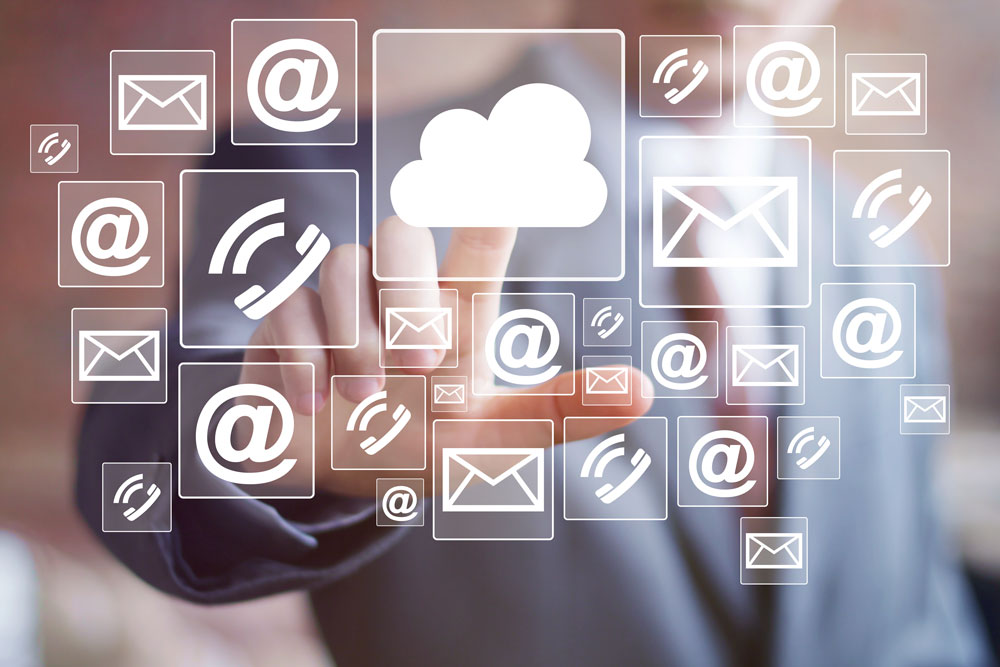
Nov 20, 2017 | SMB Technology, SMB Technology, SMB Technology, SMB Technology, Technology News
Companies large and small have migrated to the Cloud Computing model for economic and competitive advantage. As you evaluate your options, here are some questions to ask that will help you get ready. On-Premise vs. Cloud? Do you have mission-critical files and applications on premise? If so, your applications and their data may be at risk. If you are in a flood zone, fire zone or area of extreme weather your systems could be in jeopardy. Cloud computing data centers consolidate infrastructure in areas that are adjacent to reliable power grids, like near hospitals and police stations. Your cloud infrastructure is likely out of harm’s way and/or reliably redundant in multiple locations. Is Your IT Infrastructure Near End of Life? We all try to get the most from our investments. Your Infrastructure may be at the end of a warranty period or perhaps your applications and operating systems are no longer on the current version or are no longer supported. You may be able to squeeze a little more out of your desktops and laptops if you access your applications and data via a virtual desktop or software-as-a-service solution, provided the operating systems can be upgraded and secured. However, your on-premise servers may put your business at risk if you are relying on older hardware that is subject to failure. What’s more, this may be the weak link in your network security, inviting unauthorized users to access and infect your network. Do your Employees Work Remotely? Cloud computing lets you access your applications and data from anywhere, any time, in a secure manner. Many popular Cloud applications also...

Nov 7, 2017 | SMB Technology, SMB Technology, SMB Technology, SMB Technology, Technology News
According to technology research firm Gartner Group, technology spending is expected to grow to $3.7 Trillion dollars in 2018. Communications Services ($1.387 billion) and IT Services ($931 billion) make up the majority of spending. In contrast, Enterprise Software and Data Center Systems are the smallest categories of spending expected for next year. Shifts in IT spending from Data Centric to Cloud Computing change the landscape for buyers, vendors and technology solution providers alike. Here are top Technology Trends you will hear about in 2018. Cybersecurity 2017 was a year full of data breaches and ransomware. According to a 2017 Cost of Data Breach Study by the Ponemon institute, the average cost of a data breach in 2017 was $141 per record lost. Consider how many customer, prospect, employee, member or supplier records you may have within your organization. With the risks so high, expect Cybersecurity to be top of the list of Technology Trends for most companies next year. Cloud Computing According to Forbes, 80% of IT budgets will be committed to the Cloud. Software as a Service (SaaS) solutions will help line-of-business managers from Sales, Marketing, HR and Finance become more productive. Communications and Collaboration applications including Email, VoIP and Web conferencing solutions will connect employees across companies and supply chains. Infrastructure as a Service (IaaS) will host a range of solutions including websites, online backup and more. The utility model, or paying for usage, appeals to businesses replacing technology capital expense (CapEx) for subscription-based operating expense. Managed Services As the “everything as a service” model gains in popularity, more companies will adopt fixed- priced managed services contracts....

Oct 20, 2017 | SMB Technology, SMB Technology, SMB Technology, SMB Technology, Technology News
Many companies start their budget this time of year. As you are thinking about strategic investments, consider how you can leverage technology to improve customer service, make your employees more productive, and possibly save money. Here are a few considerations for next year’s technology budget. Network Upgrade Your network is the backbone of your technology infrastructure. Growing demand for high bandwidth activities including Communications and Collaboration, Call Center and Cloud Backup all require a bullet-proof network. What’s more, a number of advancements in Software Defined Wide Area Networking (SD-WAN) could save you a bundle. Consider having a network assessment or Telecom Expense Audit to see if you can save on your communications and networking costs next year. Fixed Priced IT If you haven’t deployed Managed Services to augment your technology infrastructure, you might consider how you could benefit from this model. By proactively monitoring and managing your infrastructure, your systems will work better and your cost of systems updates and support will be fixed. Cloud Computing The economic model of Cloud Computing allows companies to avoid unnecessary capital expense (CapEx) and use operating expense to subscribe to a range of Cloud Services. Software as a Service (SaaS) provides the latest version of your popular productivity applications, and Infrastructure as a Service (IaaS) offers a consumption model for scalable computing power. Data Protection Cyber threat, privacy data breach, human error and natural disasters can put your business at risk. Having a solid data protection plan helps businesses avoid the unnecessary downtime, fines, legal fees, and loss of reputation associated with data loss. There are many ways to invest in the...

Oct 3, 2017 | SMB Technology, Technology News
Most experts agree we will create more Data this year than in all prior years combined. According to research firm IDG the world will create 163 zettabytes of data a year by 2025. It is no surprise IDC forecasts worldwide spending on public cloud services and infrastructure to reach $122.5 billion in 2017, an increase of 24.4% over 2016. What is driving this growth and what do you need to know to manage what’s in your data center? What is Driving Data Center Growth? While businesses are drowning in data they find themselves starved for information. Trends in mobility, social media, and customer analytics can create an exponential explosion of data in your business. Business applications, email archives, file sharing and more all drive us to hoard and store data like never before. Regulatory compliance requires many industries to archive data. Additionally, low-cost storage allows businesses to easily accumulate data on a range of devices including desktops, laptops, and on-premise services. Many companies turn to economical options including Infrastructure as a Service for Application Hosting and Failover to store and protect this data. How can a Business Benefit from Infrastructure as a Service? Infrastructure as a Service (IaaS) is a way for businesses to use cloud computing to tap into computer resources over the Internet. The Cloud Computing model allows businesses to avoid the Capital Expense (CapEX) of investing in infrastructure. The business owner only pays (rents) the portion that is consumed. This utility computing model is adopted by most businesses today and helps alleviate some of the concerns related to managing your own data center. How to Avoid...
Sep 19, 2017 | SMB Technology, Technology News
The internet of Things (IoT) is much-talked-about technology. Driven by low-cost sensors, ubiquitous connectivity and updates to the Internet Protocol (IP), IoT is rapidly being adopted. Research firm Gartner expects over 8 billion devices connected in 2017. Cities use IoT to relieve parking congestion by collecting data on open parking spots; farmers can measure moisture in soil; and manufacturers use this technology to track inventory in their supply chain. Because these devices may use machine-to-machine connectivity without human intervention, this can increase the IoT Security Challenge. Here are some security considerations for IoT. IoT Network Security IoT Network Security goes beyond traditional network security requirements for connecting PCs, Laptops, Tablets and servers together. Networks supporting IoT will need to support a wider range of devices using a wider range of protocols for connectivity. Not surprisingly, Markets and Markets forecast IoT network security as the largest segment of a market expected to grow to over $29 billion by 2022. IoT Encryption One of the primary business benefits of IoT is the data that can be collected and analyzed from these devices. Using IoT encryption technologies to protect this information at rest or in transit is an IoT Security Challenge for businesses adopting IoT technologies. Standard encryption technology is stretched to its limits by IoT encryption requirements. Specialized IoT encryption technologies are needed due to the wide range of devices used for IoT deployments. IoT Security Reporting and Analytics IoT applications are not immune to hackers and security breach attempts. Due to the volume of devices, monitoring and analyzing IoT security will become increasingly challenging. Artificial intelligence and big-data analytics are...
Sep 12, 2017 | SMB Technology, Technology News
Recent Hurricanes Harvey and Irma, along with major earthquakes in Mexico, remind us how vulnerable we can be to disasters, and underscore the importance of data protection. As businesses depend on access to a range of systems–including call center, communications and collaboration application, customer management, and more–having a solid data protection plan can help you in a disaster recovery scenario. Now more than ever, a range of options exist to help maintain business continuity. Here are a few options to consider. Review Your Data Protection Plan Key to your data protection plan is identification of mission-critical systems. The most important systems should be redundant, with the ability for failover in the event of a disaster. Your data centers and failover options should be geographically dispersed and on different network backbones. This can minimize downtime and get you back up and running sooner. Having your data backup available in Cloud Storage can help you recover other important files and application data if you lose access to your on-premise systems. SD-WAN for Business Continuity Software-defined wide area networks (SD-WAN) can also provide you a highly reliable and redundant network. Having the ability to switch Wide Area Networks using SD-WAN as an alternative to more costly MPLS solutions can ensure connectivity during a natural disaster. What’s more, Software-Defined Wide Area Networking can save you money in the long run by giving you the flexibility of a multi-carrier solution. Software as a Service for Disaster Recovery More businesses are turning to the Cloud for a range of applications–hosted email, Voice over IP (VoIP), Call Center, and others–to keep communications flowing during a...





